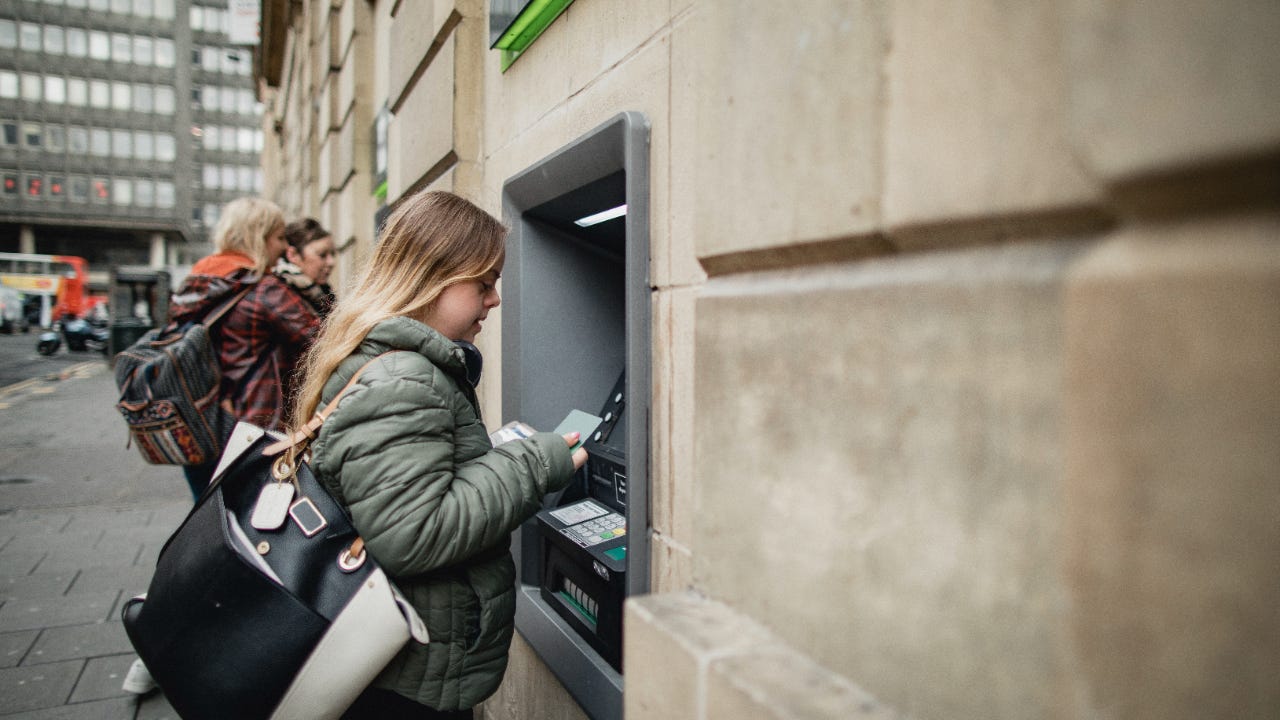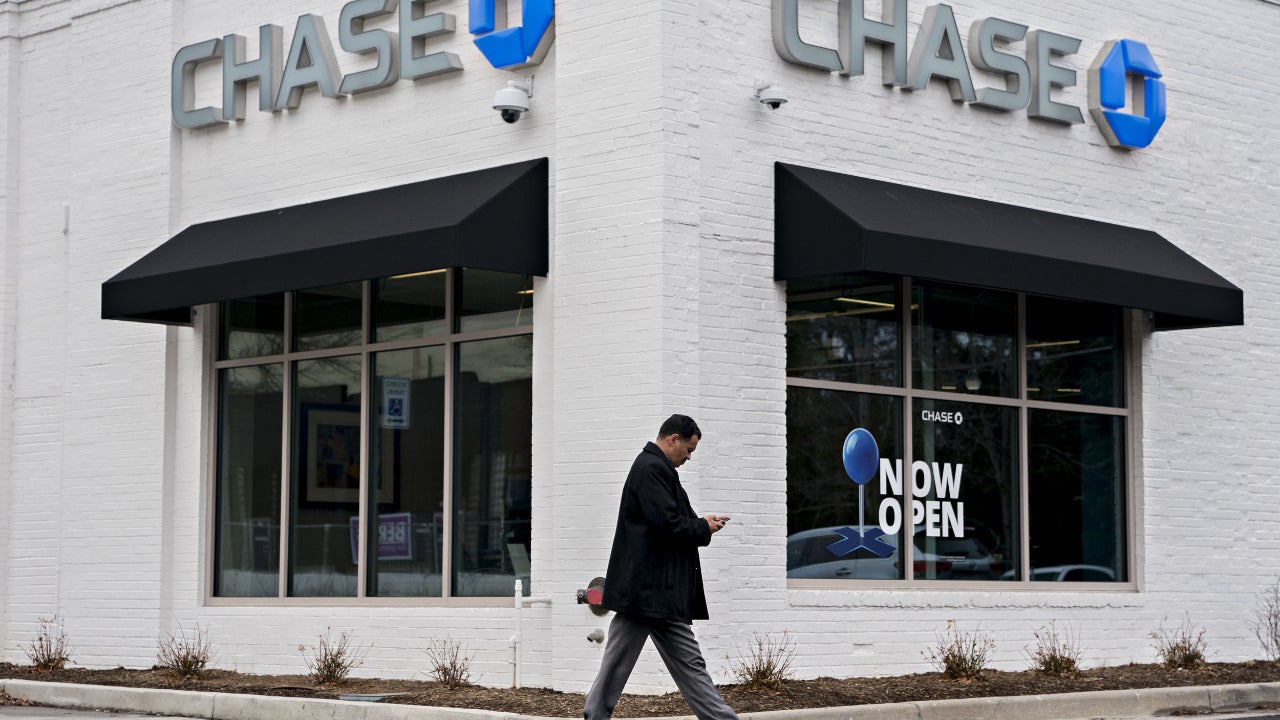The best big banks of 2025

Key takeaways
- The best big banks generally provide a positive digital banking experience through their mobile apps.
- The absolute largest banks – based on branch locations – didn’t make Bankrate’s best bank list, including Chase Bank and Bank of America.
The nation’s best big banks typically provide customers with everything they need to manage their finances, whether in a branch, at home or on the road. Those features include easy access to ATMs, flexible customer-service hours, highly ranked mobile apps and other resources to help customers handle nearly every banking situation.
To determine the best big banks, Bankrate analyzed minimum deposit requirements, monthly service fees, overdraft fees, certificate of deposit (CD) offerings, savings yields, ATM access and other criteria.
Big banks are sometimes known for offering bank account bonuses, but they generally don’t offer the absolute highest savings rates and CD yields.
Capital One
Capital One is Bankrate’s best big bank for the eighth straight year. Capital One’s competitive yields rival savings accounts and CDs offered by online banks. For a big bank, its 360 Checking Account has many features that Bankrate looks for: It doesn’t require a minimum to open the account; doesn’t charge a maintenance fee; pays a higher yield than the typical big bank; and offers customers ample ATM access.
Capital One operates more than 250 branches and more than 50 cafés.
Capital One also offers customers access to direct deposits up to two days early and has eliminated overdraft fees.
- Accessible accounts
- Capital One checking and savings accounts and CDs have no minimum opening deposit requirement, making them accessible to a range of savers. The checking and savings accounts don’t charge a monthly service fee either.
- Highly-rated mobile app
- Capital One’s mobile app receives high ratings from users of iOS and Android devices.
- ATM access
- Customers have free access to tens of thousands of Allpoint, MoneyPass and Capital One ATMs.
Citibank
Citibank, the banking arm of Citigroup, is the fourth-largest bank in the U.S. based on assets, according to the Federal Reserve., The bank offers a competitive yield on its Citi Accelerate High Yield Savings account and no minimum deposit is required to open it. The account is available in most, but not all, U.S. states. Other standout features include a highly-rated mobile app and ample branch access.
- Digital leader
- Citi’s mobile app receives high ratings from users of both iOS and Android devices. Customers can also use the app to pay friends with Zelle and even lock or unlock a card.
- Branch access
- Citibank has 666 locations in the U.S., as of late December 2023, according to data from the Federal Deposit Insurance Corp., or FDIC.
- Competitive savings yields
- Citibank offers a competitive yield on its savings account online, but it’s not available in all areas.
Morgan Stanley Private Bank
Perhaps known best for its wealth management services, Morgan Stanley Private Bank offers its personal banking services through E*TRADE, and it offers CDs, savings and checking accounts. The bank doesn’t maintain branches, but anyone in the U.S. can open an account online.
- High-yield accounts
- E*TRADE from Morgan Stanley offers a couple of accounts with ultra-competitive yields, including a checking account that offers a nearly unmatched APY.
- Wide range of CDs
- Morgan Stanley offers a variety of CD terms. All of them come with high APYs, and there’s no minimum deposit requirement to open an account, to boot.
- Highly-rated mobile app
- Both iOS and Android users indicate satisfaction with Morgan Stanley’s E*TRADE mobile app. The app lets you manage your accounts, in addition to investing and trading.
M&T Bank
M&T offers a full range of personal and business banking products. Some of the bank’s accounts offer competitive rates, but others remain lackluster, including the Relationship Savings account.
- Branch access
- M&T Bank operates more than 1,000 branches and 1,800 ATMs in 14 Eastern states and the District of Columbia. It’s headquartered in Buffalo, New York, and was founded as Manufacturers and Traders Trust Co. in 1856.
- Mixed mobile app
- The bank’s mobile app garners high ratings on the Apple App Store, making it a good choice for those who prefer managing their finances right from their smartphone. However, the app fairs significantly worse on the Google Play Store, indicating the experience may not be as good for Android users.
- Some access accounts
- M&T Bank offers a checking account without monthly maintenance fees or minimum balance requirements. Unfortunately, the same can’t be said for many of its other accounts, including some of its savings accounts, which come with a hefty monthly fee that isn’t easily waived.
Huntington Bank
While Huntington Bank has a relatively small physical footprint, extending to just 12 states, the bank offers several accounts that can be opened online. Huntington Bank offers a full suite of deposit products, ranging from certificates of deposits (CDs) all the way to money market accounts. So, if you’re looking to consolidate your finances under one roof, Huntington may be a good choice.
- Branch access
- Huntington Bank maintains about 1,000 branches across 12 states. Most of them are in the Midwest. The bank also maintains approximately 1,600 fee-free ATMs.
- Wide range of products
- Huntington offers every type of deposit account you might need, both for personal and business purposes. The bank also offers a host of credit and loan options, including mortgage banking services, in addition to wealth management services.
- Highly-rated mobile app
- Huntington Bank’s mobile app scores high marks across both the Apple App and Google Play stores.
Pros and cons of large national banks
Pros
- Most people might have one of the largest banks in America near them.
- These banks might have convenient locations near you.
- Large national banks generally have most of the traditional products and services that you’d expect a bank to offer. These include checking and savings accounts, safe deposit boxes, mortgages and other banking products and services. Some online FDIC-insured banks don’t offer checking accounts, for instance.
Cons
- The largest banks usually don’t offer the highest yielding rates available. These are typically offered by online-only FDIC-insured banks.
- Big banks typically require a direct deposit to avoid a monthly service fee. Or they might have higher minimum balance requirements than online banks.
- Sometimes online banks might actually have more ATMs in their network than a brick-and-mortar bank.
You may also like


Best banks for small businesses in 2024

The best regional banks of 2025



